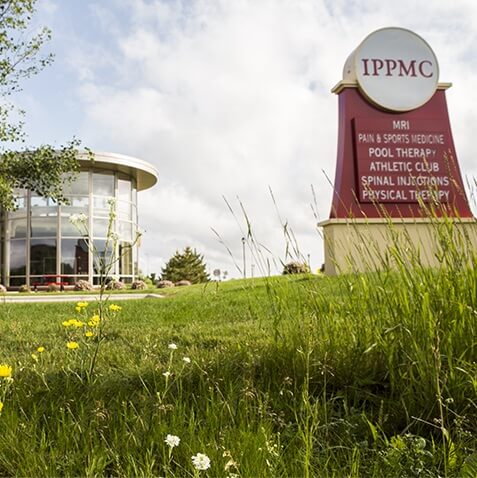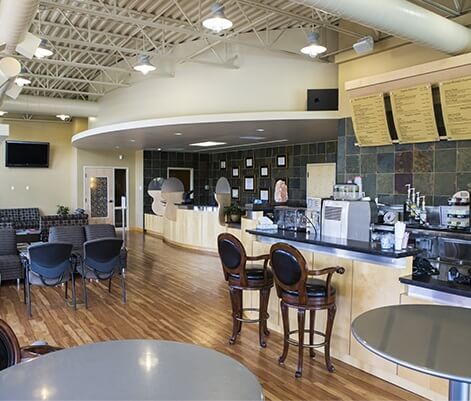Thomas C. Kowalkowski, DO, FIPP
Interventional Pain and Physical Medicine Clinic, St. Cloud, MN
Background: Various minimally invasive percuta-neous procedures have evolved over the decades as al-ternatives to open microdiscectomy, the gold standard surgical treatment for patients with contained herni-ated nucleous pulposus that have failed conservative treatment. 1-5 A new technique, percutaneous hydrodis-cetomy, uses a high velocity, non-thermal saline fluid jet discectomy for radiculopathy secondary to herniated nucleus pulposus.
Methods: Retrospective chart review was con-ducted on consecutive patients that failed conservative management for radiculopathy secondary to subliga-mentous lumbar herniated nucleous pulposus and were treated with percutaneous hydrodiscectomy at a single lumbar level. An independent reviewer blinded to the clinical outcomes evaluated pre and post procedure magnetic resonance imaging studies.
Results: A total of 15 patients (73% male) with a mean age of 45 years underwent percutaneous hydro-discectomy without complications. Fourteen patients (93%) had an improvement in back pain and radiculopa-thy; one patient did not have improvement in symptoms and required a spinal cord stimulator. Five patients that reported improved symptoms were treated with subse-quent transforaminal epidural steroid injections; 2 ag-gravated by new events not related to the procedure and 3 for residual incisional pain that resolved. Mean VAS decreased significantly from 60 to 32 (p=0.03) and mean ODI significantly improved from 40% to 22% (p=0.007) at last follow-up.
Conclusions: These early preliminary results dem-through a cannulated system to mechanically remove disc material to reduce intradiscal pressure on the nerve root. The procedure is performed under local anesthe-sia with sedation with minimal complications, blood loss and tissue disruption.
Objective: To evaluate the clinical and radiograph-ic outcomes of patients that had percutaneous hydro-onstrate percutaneous hydrodiscectomy is safe and ef-fective in a select group of patients. Larger prospective controlled studies are warranted to validate the long-term benefits of this promising new technology.
References:
- Erginousakis D, Filippiadis DK, Malagari A, et al: Comparative prospective randomized study comparing conservative treatment and percutaneous disk decom-pression for treatment of intervertebral disk herniation. Radiology; 2011; 260(2):487-493.
- Hirsch JA, Singh V, Falco FEF, et al: Automated percutaneous lumbar discectomy for the contained her-niated lumbar disc: a systematic assessment of evidence. Pain Phys J; 2009; 12:601-620.
- Singh V, Manchikanti L, Benyamin RM, et al: Percutaneous lumbar laser disc decompression: a sys-tematic review of current evidence. Pain Phys J; 2009; 12:573-588.
- Helm S, Deer TR, Manchikanti L, et al: Effective-ness of thermal annular procedures in treating disco-genic low back pain. Pain Phys J; 2012; 15:E279-E304.
- Manchikanti L, Derby R, Benyamin RM, et al: A Systematic Review of Mechanical Lumbar Disc Decom-pression with Nucleoplasty. Pain Phys J; 2009; 12:561-572.
IPPMC Recognized for Having Workplace Flexibility and Family-Friendly Values
Despite an economy delivering daily bad news for many businesses and their employees, several Minnesota businesses are shining by helping their employees achieve work-life balance. The Interventional Pain and Physical Medicine Clinic and Netgain have been selected as finalists for the national Alfred P. Sloan Foundation Award for Workplace Flexibility. Both businesses completed a lengthy, in-depth application and scored in the top 20% nationalling and are now undergoing an employee survey as the final step after being selected as a finalist. They were the only Central Minnesota finalists selected as part of a prominent group of 27 Minnesota businesses that included such companies as General Mills, Best Buy, Wells Fargo and Accenture.
The Brian Klinefelter Foundation also announced its finalists for the BKF Family-Friendly Award, which recognizes Minnesota businesses that have successfully demonstrated the implementation of family-friendly employee practices. These policies allow employees to be involved in growing great kids in their community by maintaining a work-life balance. Finalists completed an application where they highlighted employee benefits and policies that focused on health and wellness, workplace flexibility and community involvement. Finalists included The Interventional Pain and Physical Medicine Clinic, Netgain, CenterPoint Energy and Marco.
The Interventional Pain and Physical Medicine Clinic (IPPMC) of Sartell is a multidisciplinary clinic providing interventional pain techniques, physical therapy and behavioral health. IPPMC offers its patients and 30 employees such perks as an organic espresso and juice bar, a full-service fitness center and a state-of-the-art U.S. Green Building Council approved medical facility. They also offer flexible work arrangements for their employees.
Dr. Kowalkoski indicated that the implementation of employee-friendly practices have lead to the recruitment and retention of top talent. This, in turn, has helped the companies provide superior products and service to their patients.
For more information or tickets to the awards dinner visit www.growgreatkids.org or contact the Foundation at 320-257-6688.


